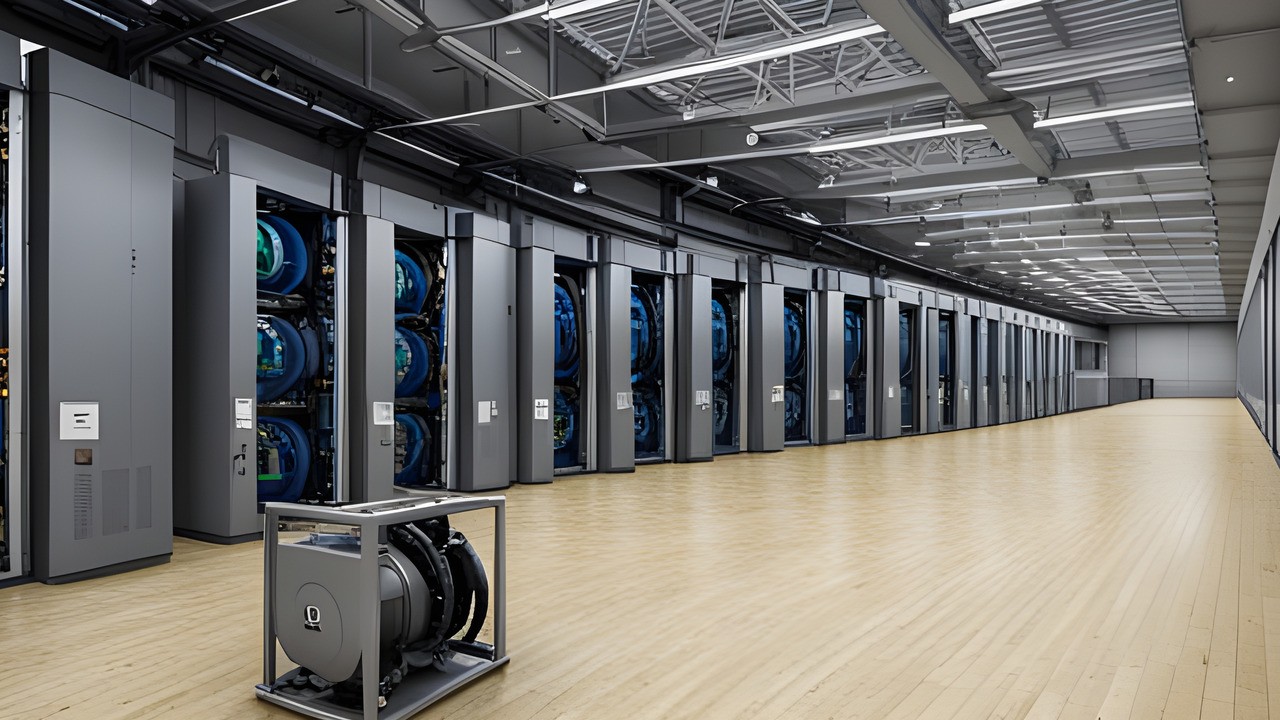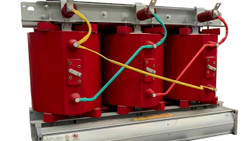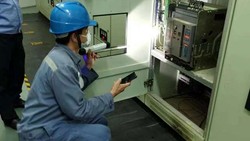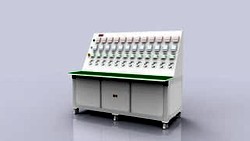In the utilities and power generation sectors, effective maintenance is essential to ensure the reliability and availability of equipment. As the demand for energy continues to grow, companies in these sectors are constantly striving to improve their maintenance processes.
This article offers a comprehensive comparison of different methodologies, discussing their principles, advantages, and disadvantages. By analysing these approaches, you can gain valuable insights into how maintenance can be managed in the utilities, transmission- and power generation companies.
Reactive Maintenance
Reactive maintenance, also known as "breakdown maintenance" or "corrective maintenance," refers to a type of maintenance strategy in which repairs or maintenance activities are performed only after a piece of equipment or machinery has failed or malfunctioned. In the context of utilities and power companies, reactive maintenance refers to addressing issues or failures in electrical or power systems after they occur, rather than proactively preventing them.
For engineers in utilities and power companies, reactive maintenance can pose several challenges and considerations:
- Unplanned downtime
Reactive maintenance often leads to unexpected equipment failures, resulting in unplanned downtime. This can disrupt power supply, interrupt services to customers, and potentially impact the overall system reliability. - High repair costs
With reactive maintenance, repairs are typically performed when an issue has already escalated and caused damage. Consequently, the cost of repairs tends to be higher compared to preventive maintenance, where issues are identified early and addressed before they intensify. - Safety risks
Equipment failures and unexpected breakdowns can present safety hazards, both for engineers conducting repairs and for individuals present in the vicinity. Reactive maintenance may require engineers to work under time pressure and in less favourable conditions, increasing the risk of accidents. - Lack of time for planning
Reactive maintenance often means that engineers have limited time for planning repairs. This can lead to rushed decision-making, suboptimal use of resources, and prolonged downtime, as engineers may need to wait for spare parts or specialized personnel to arrive. - Reduced equipment lifespan
Operating equipment until failure without proactive maintenance can lead to a shorter overall lifespan for the equipment. This can result in the need for more frequent replacements, leading to increased costs and potential disruptions during replacement activities.
While reactive maintenance is primarily focused on addressing immediate issues, it is not a sustainable long-term approach. Utilities and power companies should strive to balance reactive maintenance with preventive and predictive maintenance strategies. By implementing a proactive maintenance approach, engineers can identify potential problems early, schedule maintenance activities during planned downtime, reduce repair costs, improve safety, and extend the lifespan of critical equipment.
Corrective Maintenance
For engineers working in utilities and power companies, corrective maintenance refers to the practice of addressing equipment failures or malfunctions as soon as they occur in order to restore normal operation. It is a reactive approach that focuses on promptly repairing or replacing faulty components or systems, ensuring that they are functioning correctly.
In the context of utilities and power companies, where reliable and uninterrupted power supply is crucial, corrective maintenance becomes essential for minimizing downtime and preventing any disruptions in service. When a failure occurs, engineers are responsible for identifying the root cause of the problem and taking appropriate actions to rectify it.
The process of corrective maintenance typically involves the following steps:
- Identification and reporting
First, engineers are expected to quickly identify any abnormality, malfunction, or failure in the equipment or system. This can be detected through various means, including alarms, system monitoring software, sensory data, or reports from operators or maintenance personnel. - Troubleshooting and analysis
Once the failure is identified, engineers need to conduct a thorough analysis to determine the cause. This may involve conducting diagnostic tests, analysing historical data, reviewing equipment manuals, or consulting with other team members or experts. The goal is to accurately diagnose the problem to enable the most effective and efficient solution. - Repair or replacement
After identifying the root cause, engineers proceed with the necessary repairs or component replacements. Depending on the complexity and criticality of the equipment or system, this process may involve collaboration with other technicians, electricians, or specialists with specific expertise. - Verification and testing
Once the repairs or replacements are completed, engineers perform testing and verification procedures to ensure that the equipment is functioning correctly and there are no lingering issues. This may involve running various performance tests, conducting system checks, and verifying the restoration of normal operation. - Documentation and reporting
Lastly, engineers maintain detailed records of the failure, the actions taken, and any additional recommendations or observations. This documentation helps in creating a historical log for future reference, tracking patterns of failures, identifying potential areas of improvement, and providing useful information for maintenance planning and decision-making.
Corrective maintenance plays a critical role in utilities and power companies, as it helps minimize the impact of equipment failures and ensures the reliability and stability of power supply. While preventive and predictive maintenance strategies are also adopted to reduce the occurrence of failures, corrective maintenance acts as a complementary approach to address unforeseen events and quickly restore operations.
Preventive Maintenance
Preventive maintenance is a proactive maintenance strategy that involves regularly scheduled inspections, maintenance, and servicing of equipment and systems to prevent potential failures or breakdowns. For engineers in the energy segment, preventive maintenance plays a crucial role in ensuring the reliable and efficient operation of power systems. Here are some key aspects of preventive maintenance:
- Scheduled inspections and maintenance
Engineers establish a predefined maintenance schedule for equipment and systems based on manufacturer recommendations, industry standards, and historical data. This includes tasks such as lubrication, cleaning, calibration, and testing to identify and address any emerging issues before they escalate. - Condition monitoring
Engineers use various techniques to monitor the condition of equipment and systems continuously. This can involve regular measurements, such as temperature, vibration, or fluid analysis, to detect anomalies that may indicate potential failures. By monitoring key parameters, engineers can identify early warning signs of deterioration and take proactive action. - Replacement of worn parts
As part of preventive maintenance, engineers proactively replace parts that are prone to wear or have a limited lifespan. This helps prevent unexpected failures and ensures the equipment operates within its design limits. - Planned downtime
Preventive maintenance activities are scheduled during planned downtime or during periods of low demand when the impact on customers is minimized. By conducting maintenance during these times, engineers can avoid or minimize unplanned outages and reduce the risk of equipment or system failures during critical periods. - Maintenance records and documentation
Engineers maintain detailed records of all preventive maintenance activities, including inspection results, findings, and repairs. This documentation serves as a reference for future maintenance activities and helps identify trends or recurring issues.
Preventive maintenance offers several benefits for utilities and power companies:
- Improved reliability
By proactively addressing potential issues, preventive maintenance helps minimize unexpected failures and reduces downtime, ensuring a more reliable power supply. - Increased equipment lifespan
Regular maintenance, servicing, and replacement of worn parts extend the lifespan of equipment, reducing the need for premature replacements. - Cost savings
Preventive maintenance reduces the likelihood of costly emergency repairs or replacements, minimizes downtime-related financial losses, and optimizes maintenance costs. - Enhanced safety
Regular inspections and maintenance activities improve safety by identifying and addressing potential hazards before they cause accidents or failures.
In summary, preventive maintenance empowers engineers to take proactive measures to ensure the reliability, efficiency, and safety of power systems by identifying and addressing potential issues before they cause major problems or failures.
Predictive Maintenance
Predictive maintenance is an advanced maintenance strategy that utilizes real-time data and condition monitoring techniques to anticipate equipment failures or maintenance requirements. It enables engineers in utilities and power companies to proactively address issues before they cause unplanned downtime, reduce the overall maintenance costs, and optimize asset performance. Here's an explanation of predictive maintenance specifically for engineers in the energy segment:
- Real-time data collection
Engineers collect data from various sources, such as sensors, smart devices, and data management systems, to continuously monitor the performance and condition of equipment. This data includes parameters like temperature, humidity, pressure, vibration, energy consumption, and more. - Condition monitoring techniques
Engineers employ various condition monitoring techniques to assess the health of equipment. Examples include vibration analysis, thermography, oil analysis, infrared imaging, acoustic monitoring, and power quality analysis. These techniques help identify abnormal patterns or deviations from normal behaviour that indicate potential equipment failures. - Data analysis and machine learning
Engineers use data analysis tools and platforms, including machine learning algorithms, to process the collected data and detect patterns, correlations, and anomalies. They can develop models and algorithms that learn from historical data and current conditions to predict when maintenance actions might be required. - Predictive maintenance planning
Based on the analysis of real-time data and the predictions made by machine learning models, engineers can plan maintenance activities more effectively. They can prioritize maintenance tasks, allocate resources efficiently, and schedule downtime for repairs or replacements, minimizing disruptions to operations. - Condition-based interventions
Predictive maintenance enables engineers to intervene when equipment actually needs maintenance, ensuring the right actions are taken at the right time. This approach reduces unnecessary maintenance and minimizes the risk of breakdowns caused by unexpected failures. - Data-driven decision-making
Predictive maintenance empowers engineers to make data-driven decisions regarding maintenance plans, spare parts inventory, and resource allocation. It helps optimize maintenance strategies, extend the lifespan of critical assets, and maximize their performance. - Continuous improvement
Predictive maintenance is an iterative process that allows engineers to continuously analyse and refine their maintenance models and strategies. By learning from historical maintenance data and adjusting algorithms, engineers can continuously improve the accuracy of their predictions and further optimize maintenance activities.
Overall, predictive maintenance equips engineers with the ability to monitor equipment condition in real-time, anticipate failures, and intervene proactively. By leveraging advanced data analysis techniques and machine learning, predictive maintenance can drive substantial improvements in uptime, asset performance, and maintenance efficiency.

(symbol image, credit CLOU)
Reliability-Centered Maintenance (RCM)
Reliability-Centered Maintenance (RCM) is a systematic approach that focuses on preserving equipment function rather than the equipment itself. It involves identifying the most efficient maintenance strategy for each asset based on its criticality, failure modes, and consequences of failure. It was developed by the airline industry in the late 1960s to improve aircraft safety, and its principles have since been widely adopted in various industries.
RCM provides engineers with a systematic approach to determine the most effective maintenance tasks based on understanding the functions, failure modes, and consequences of asset failures. Here's an explanation of RCM specifically for engineers in utilities and power companies:
- Asset identification
Engineers begin by identifying the critical assets that play a significant role in the operation and reliability of utilities and power systems. These may include transformers, generators, switchgear, circuit breakers, turbines, and other equipment with direct impact on power generation, distribution, and transmission. - Function determination
For each identified asset, engineers evaluate its intended functions in terms of reliability and performance. They analyse the asset's role in maintaining power supply, its reliability requirements, and the consequences of its failure on overall system performance. - Failure modes analysis
Engineers conduct a detailed analysis to identify and understand all possible failure modes, which are the different ways in which an asset may fail. They consider both functional failures (failures to perform intended functions) and performance failures (deviations from desired performance levels). - Consequence assessment
This step involves evaluating the consequences of each failure mode. Engineers assess the severity and impact of failures on system reliability, safety, environmental factors, and financial costs. The focus is on understanding the potential risks associated with each failure mode. - Maintenance strategy determination
Based on the analysis conducted in the previous steps, engineers develop maintenance strategies tailored for each asset and failure mode. The strategies may include preventive maintenance, condition-based maintenance, predictive maintenance, or a combination of these approaches. The goal is to determine the most appropriate and cost-effective maintenance tasks to mitigate the identified failure modes and their consequences. - Implementation and continuous improvement
Engineers implement the defined maintenance strategies and closely monitor their effectiveness. They collect data on asset performance, failures, and maintenance activities to assess the impact of the chosen strategies. This data-driven approach helps identify areas for improvement, refine maintenance plans, and optimize maintenance activities over time. - Documentation and knowledge management
Engineers document all findings, strategies, and maintenance plans as part of a comprehensive RCM program. These records serve as a knowledge base for future reference and facilitate consistent decision-making when managing assets. They also contribute to the organizational learning process and support training efforts.
RCM can significantly enhance the maintenance practices in utilities and power companies by focusing resources on critical assets and addressing their failure modes effectively. By systematically analysing functions, failure modes, and consequences, engineers can prioritize maintenance efforts, optimize maintenance tasks, and ensure the reliability and availability of assets for uninterrupted power supply.
Challenges of RCM
While Reliability-Centered Maintenance (RCM) offers numerous benefits, there are also some drawbacks to consider. One drawback is the potentially high implementation cost. RCM requires a significant investment in terms of time, resources, and expertise for proper analysis, documentation, and implementation. This can pose challenges for utilities and power companies with limited budgets or a lack of skilled personnel.
Another drawback is the complexity of the RCM process. It involves a detailed analysis of assets, failure modes, and consequences, which can be time-consuming and require specialized knowledge. This complexity may deter some engineers from adopting RCM, especially if they are not familiar with the methodology or lack the necessary training.
Additionally, RCM requires a strong data management and analysis system. Accurate and up-to-date data on asset performance, failures, and maintenance activities are crucial for effective decision-making. Setting up a robust data infrastructure and ensuring data integrity can be a challenge, particularly for companies with legacy systems or inconsistent data collection practices.
Furthermore, RCM may not be suitable for all assets in power companies. It is most beneficial for critical assets with high consequences of failure, but not all equipment may require the same level of analysis and maintenance optimization. Some assets may be adequately maintained using simpler methods, such as time-based or reactive maintenance, depending on the industry, asset type, and organization's risk tolerance.
Lastly, RCM requires commitment and cultural change within an organization. It involves a shift from traditional maintenance approaches and requires buy-in from management, engineers, and maintenance personnel. Resistance to change, lack of support, or a lack of understanding of the benefits of RCM can hinder its successful implementation.
Despite these drawbacks, many utilities and power companies have found significant value in adopting RCM as it helps maximize asset reliability, reduces costs associated with unplanned failures, and improves overall maintenance efficiency. Companies must carefully evaluate their specific needs and weigh the benefits against the potential drawbacks before deciding on the adoption of RCM.
Total Productive Maintenance (TPM)
Total Productive Maintenance is a comprehensive approach to equipment management and maintenance that aims to maximize overall production efficiency, reduce downtime, and improve equipment reliability in utilities and power companies. It involves the collaboration of engineers, operators, and maintenance personnel to create a culture of proactive maintenance and continuous improvement.
For engineers in utilities and power companies, TPM provides a framework to optimize the performance of critical assets and systems. It focuses on three main pillars:
- Preventive Maintenance
TPM emphasizes the implementation of preventive maintenance practices to prevent equipment failures and unplanned downtime. Engineers are responsible for developing preventive maintenance plans, which include regular inspections, lubrication, cleaning, and component replacements based on manufacturer guidelines or historical data. - Autonomous Maintenance
This pillar aims to empower operators and frontline maintenance personnel by involving them in the care and maintenance of equipment. Engineers play a vital role in training and supporting operators to conduct routine maintenance tasks such as cleaning, lubrication, minor adjustments, and basic troubleshooting. This collaboration helps to enhance equipment reliability, reduce small breakdowns, and create a sense of ownership among operators. - Continuous Improvement
TPM encourages a culture of continuous improvement within the organization. Engineers are expected to lead improvement initiatives by analysing equipment data, identifying areas for optimization, and implementing changes to enhance equipment performance and reliability. This may involve upgrading components, redesigning maintenance procedures, implementing advanced monitoring systems, or exploring new technologies.
In the context of utilities and power companies, where reliable power supply is crucial, TPM helps ensure sustained operation of equipment, minimizes disruptions, and improves overall productivity. Engineers in these companies need to collaborate with operators and maintenance teams to implement TPM strategies effectively.
The key activities involved in TPM implementation include:
- Equipment and process mapping
Engineers identify critical equipment and associated processes and document their operating principles, maintenance requirements, and performance indicators. - Maintenance training and education
Engineers conduct training programs to equip operators and maintenance personnel with the skills and knowledge needed for autonomous maintenance activities and effective equipment care. - Equipment improvement and optimization
Engineers analyse equipment performance data, conduct root cause analysis of failures, and implement improvements or equipment modifications to enhance reliability, maintainability, and productivity. - Condition monitoring and predictive maintenance
Engineers utilize advanced monitoring techniques, such as vibration analysis, thermography, or online monitoring systems, to identify early signs of failure and implement predictive maintenance strategies, allowing for timely intervention before failures occur. - Performance tracking and review
Engineers establish key performance indicators (KPIs) to monitor equipment reliability, uptime, maintenance costs, and other metrics. They regularly review these KPIs to assess the effectiveness of TPM implementation, identify areas for improvement, and develop action plans accordingly.
Total Productive Maintenance aims to create a culture of teamwork, continuous improvement, and proactive maintenance practices in utilities and power companies. By implementing TPM strategies, engineers in these industries can contribute to improving equipment reliability, reducing downtime, enhancing maintenance effectiveness, and ultimately ensuring reliable power supply to consumers.
Takeaway
Utilities and power companies have different maintenance approaches, including reactive-, preventive- and Total Productive Maintenance (TPM). While reactive maintenance is cost-effective in the short term, TPM offers a comprehensive approach that combines preventive maintenance, autonomous maintenance, and continuous improvement. TPM involves all stakeholders, maximizes production efficiency, reduces downtime, and improves equipment reliability. By implementing advanced strategies, utilities and power companies can ensure a reliable power supply.
However, it requires a significant investment in time, resources, and organizational culture change. Ultimately, the choice between the different maintenance approaches will depend on the unique requirements and objectives of your organization.
Please feel free to share your thoughts and preferences regarding maintenance strategies by leaving a comment.
Editor's note: This article was originally published in July 2023 and has been updated for comprehensiveness.





All comments are moderated before being published. Inappropriate or off-topic comments may not be approved.